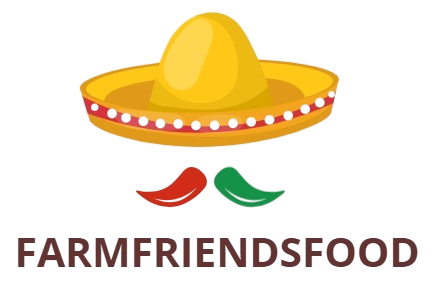In the world of cookware, the sauté pan and skillet are two essential, versatile pans that frequently make their way into home kitchens. While both are used for similar cooking techniques, the subtle differences in design can make a big impact on your cooking results. From the way they handle heat to the volume they can accommodate, knowing when to use each pan—and whether you need both—can make all the difference in your kitchen.
The Shape: A Matter of Sides
The primary difference between a sauté pan and a skillet comes down to one defining feature: the shape of their sides. A sauté pan is characterized by its wide, flat bottom with relatively tall, straight sides. This design is perfect for cooking methods that require even heat distribution and liquid retention. On the other hand, a skillet has sloped sides that flare outwards, creating a larger surface area at the top. This slight variation in shape plays a major role in how these pans perform in the kitchen, affecting everything from surface area to evaporation rates.
But what does this difference mean in practical terms? Let’s dive into the key factors that separate the two.
Surface Area: More Room for Cooking in a Sauté Pan
When it comes to surface area, the sauté pan has the advantage. While pans are typically measured by the diameter of their lip, the cooking surface is what actually matters in the kitchen. Due to the straight sides of a sauté pan, it can provide a larger, more efficient cooking area. For example, a 12-inch sauté pan offers about 113 square inches of cooking space, which is ideal for tasks like searing multiple pieces of meat or cooking vegetables.
In contrast, the skillet, with its sloped sides, loses some of that surface area. A 12-inch skillet might only provide around 79 square inches of usable space, which means you have 30% less room to work with. So, if you’re looking to cook a larger batch of food—say, 12 pieces of chicken at once—a sauté pan will likely be the better choice. With a skillet, you may find yourself needing to cook in batches, which can be more time-consuming and less efficient.
Volume: More Liquid, Less Splashing in a Sauté Pan
The straight sides of a sauté pan not only provide more cooking space but also allow you to use a larger volume of liquid. If you’re braising meats or making sauces, a sauté pan’s design helps to keep the liquid contained, preventing splashes and making it easier to control the cooking process. This is particularly helpful when you’re working with dishes that require long, slow cooking or those that involve a significant amount of liquid, such as braising chicken thighs or cooking meatballs in oil.
In contrast, the angled sides of a skillet make it less effective at retaining liquids. The liquid tends to spread out, making it harder to manage and more prone to splashing. The sauté pan’s ability to hold liquid efficiently also means it’s better at minimizing evaporation. With a tight-fitting lid, a sauté pan can trap steam and keep moisture in, which is a big advantage when cooking stews or sauces that need to simmer for long periods.
Weight: A Heavy Duty Sauté Pan vs. A Lighter Skillet
Another difference between these two pans is weight. Because of its wider base and higher sides, a sauté pan tends to be heavier than a skillet of the same diameter. This added weight can make a sauté pan feel a bit more cumbersome, especially when lifting or moving it around. Some sauté pans even come with a helper handle opposite the main handle to assist with lifting, which can be particularly useful when you’re dealing with a full pan of food.
However, the weight of a sauté pan isn’t necessarily a downside—it can actually be an asset when the pan is stationary, as the added mass helps to distribute heat more evenly. But when it comes to tossing food or shaking the pan to promote even cooking (as you might when making stir-fries or sautéing vegetables), the lighter weight of a skillet is a big advantage. The flared sides allow for easier movement of the contents, making it easier to stir or toss food without worrying about spills.
Tossing and Stirring: Skillets for Agile Cooking
For many home cooks, the ability to toss or stir ingredients in the pan is a crucial part of cooking. Skillets excel in this regard due to their lighter weight and sloped sides. The flared shape allows you to toss ingredients around the pan without the risk of them falling out. Whether you’re making a stir-fry, scrambling eggs, or browning ground meat, the skillet’s design allows for quick, efficient movements.
In contrast, the sauté pan’s straight sides can make tossing a bit trickier. While it’s certainly possible, it requires a bit more finesse to avoid food spilling over the sides. That said, sauté pans are fantastic for tasks that require steady, controlled cooking. They’re excellent for searing, simmering, and even shallow frying, where tossing isn’t necessarily required.
Do You Really Need Both?
Now that we’ve established the differences, the question remains: do you need both a sauté pan and a skillet in your kitchen? The answer depends largely on your cooking style and the types of dishes you regularly prepare.
If you often cook large meals that require a lot of liquid or surface area, such as braises, stews, or dishes involving multiple pieces of meat, a sauté pan will be indispensable. It’s also a great all-purpose pan that can handle nearly every task, from searing to simmering.
On the other hand, if you do a lot of quick cooking, like stir-frying, scrambling, or sautéing vegetables, the skillet’s lightweight, flared design may be more appropriate. The ease with which you can toss ingredients and the larger cooking surface can make the skillet the go-to choice for fast, high-heat cooking.
Conclusion: Choosing the Right Pan for the Job
While both sauté pans and skillets are versatile tools in the kitchen, their differences in shape have a significant impact on how they perform. The sauté pan excels in tasks that require larger surface areas, more liquid, and controlled heat, while the skillet shines in quick, agile cooking that involves tossing or stirring. Ultimately, understanding these differences can help you decide which pan is best for your specific cooking needs—and whether or not you need both in your kitchen arsenal.



